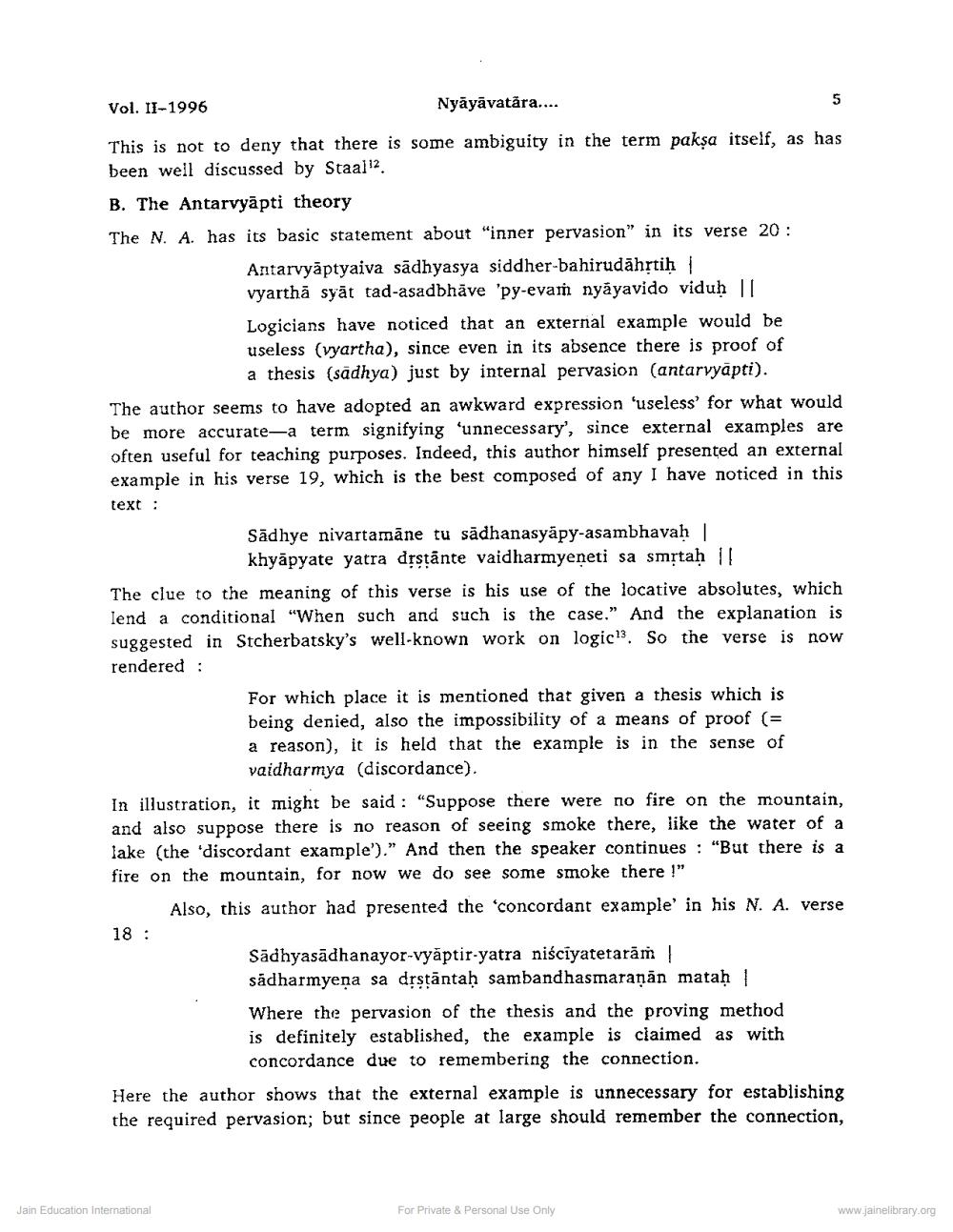Book Title: Nyayavatara and Buddhist Logical Works Author(s): Alex Wayman Publisher: Z_Nirgrantha_1_022701.pdf and Nirgrantha_2_022702.pdf and Nirgrantha_3_022703.pdf View full book textPage 5
________________ Vol. II-1996 Nyāyāvatāra.... This is not to deny that there is some ambiguity in the term paksa itself, as has been well discussed by Staal'. B. The Antarvyāpti theory The N. A. has its basic statement about "inner pervasion" in its verse 20 : Antarvyāptyaiva sādhyasya siddher-bahirudāhrtiḥ vyarthā syāt tad-asadbhāve 'py-evam nyayavido viduh || Logicians have noticed that an external example would be useless (vyartha), since even in its absence there is proof of a thesis (sādhya) just by internal pervasion (antarvyāpti). The author seems to have adopted an awkward expression 'useless' for what would be more accurate—a term signifying unnecessary', since external examples are often useful for teaching purposes. Indeed, this author himself presented an external example in his verse 19, which is the best composed of any I have noticed in this text: Sadhye nivartamāne tu sādhanasyäpy-asambhavah khyāpyate yatra drstānte vaidharmyeneti sa smộtah || The clue to the meaning of this verse is his use of the locative absolutes, which lend a conditional "When such and such is the case." And the explanation is suggested in Stcherbatsky's well-known work on logic. So the verse is now rendered : For which place it is mentioned that given a thesis which is being denied, also the impossibility of a means of proof (= a reason), it is held that the example is in the sense of vaidharmya (discordance). In illustration, it might be said : “Suppose there were no fire on the mountain, and also suppose there is no reason of seeing smoke there, like the water of a lake (the 'discordant example').” And then the speaker continues : "But there is a fire on the mountain, for now we do see some smoke there !" Also, this author had presented the 'concordant example' in his N. A. verse 18 : Sadhyasādhanayor vyāptir-yatra niściyatetaram sádharmyeņa sa drstāntah sambandhasmaraṇān mataḥ 1 Where the pervasion of the thesis and the proving method is definitely established, the example is claimed as with concordance due to remembering the connection. Here the author shows that the external example is unnecessary for establishing the required pervasion; but since people at large should remember the connection, Jain Education International For Private & Personal Use Only www.jainelibrary.orgPage Navigation
1 ... 3 4 5 6 7 8
